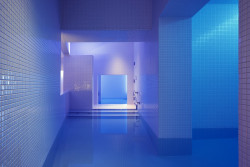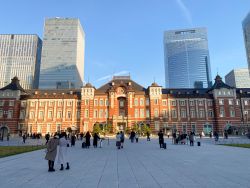
Originally published on metropolis.co.jp on April 2009

Photos by Andy Sharp
My left thumb still hadn’t thawed. Not even the heat from the ruck of salarymen crushing against me on a suburban-bound Den-en-toshi line train could warm my frozen digit. My poor thumb had been at the mercy of the elements and beholden to the charity of the nation’s motorists for the past eight days as I picked up lifts from my Yokohama home to the Hokkaido port of Tomakomai.
Friends and colleagues—both out of jest and concern—had teased me about becoming the subject of a brief news story headlined “Englishman Found Dismembered on Aomori Roadside.” While mildly apprehensive about being taken for a ride by a delinquent chimpira, my fears were abated by the benevolence of the Japanese public—although I found this disposition less evident when trying to thumb my way out of Tokyo itself.
Standing at the roadside near Yoga Interchange on the first morning of my jaunt, it seemed as if the good people of Tokyo were conspicuously ignoring my pitiable thumb—now numbed, despite my thick leather gloves, by the capital’s first real snow of the winter. It was a struggle against the cold and the urge to jump on a train home. And frigid it was, as I waited three hours to get a lift out of Tokyo from a truckie who stopped over and bought me a pack of hokkairo hand warmers. The subsequent rides took me onto roads with countless red lights—well away from my plan of speeding north on the Tohoku Expressway—leaving me at a gas station in Utsunomiya in the fading light. Here, I engaged in a verbal battle with a jobsworth who was determined to keep me off his sacred tarmac and cadged a lift with a chubby engineer who whisked me to Sendai, where after 14 hours on the road I warmed my cockles with a hot toddy and steaming bath at my hotel.

by Andy Sharp
The next two days traveling north via Morioka to Hirosaki were relatively plain hitching with a smattering of opinionated characters: a landscape gardener who asked “Oi! What are you?” on stopping, before giving me a three-hour sermon on the charms of Iwate Prefecture from his driver’s-seat soapbox; a freelance photographer who preached the virtues of fleeing from the corporate flock; and a comedic trio of estate agents who treated me to their drunken anecdotes and a slap-up lunch of fried oysters.
After a melodious evening at a shamisen izakaya in Hirosaki where the mama-san’s coarse, laconic dialect provided an amusing counterpoint, the next port of call—literally—was Oma, the northernmost town in Honshu, from which I was to take a ferry to the historic port of Hakodate. Behind the clock after a couple of leisurely rides, I persuaded a single mother to do her best Michael Schumacher impersonation along the meandering peninsula roads and managed to board with minutes to spare.
My thumb stayed safely in my pocket the following day as I soaked up some more snow, the San Francisco-like slopes of Hakodate and its award-winning ales.
The rides thereafter were more forthcoming: generously opening the passenger door for me were a courting couple with a taste for the local seafood rice bowls; a prim and proper housewife; and a waste engineer who took time out from work to dispose of me at a Lake Toya ryokan. The evening’s imbibing with a pair of marathon runners at the inn’s wannabe-swanky bar paid dividends when the manager offered me a lift to my next destination in the morning. And it was at that heavily concreted Hokkaido byway where four trusting trainee nurses stopped almost before I got my sign for the harbor out.

by Andy Sharp
The 19 hours aboard the Sunflower Furano were spent pleasurably with wine, books, sleep, soaks in the sento that ebbed and flowed with the rocking of the boat, and cigarette breaks with polite Ground Self-Defense Force squaddies.
Only on disembarking at Oarai, Ibaraki Prefecture, did my plans to free ride home hit a hitch. A knuckle of tattooed truck drivers inquired as to where I was heading and offered a lift to Yokohama, a destination whose journey time they seemed blithely unconcerned about. Imagining the reality of becoming a “brief,” I politely declined and scurried to the station-bound shuttle bus, where I sat and gave a big thumbs-up to the score of people without whose kindness I could still be stuck somewhere near an expressway in Tokyo.
Wear suitable clothing for the season: investing in a decent down jacket, warm gloves and thick socks in the winter months is worth every yen. Accommodation is entirely dependent on your budget. Eki-mae business hotels such as the Toyoko Inn (www.toyoko-inn.com/eng) and Route Inn (www.route-inn.co.jp/english/index.html) are often the most convenient and easiest for getting lifts to, but you can save money by staying at minshuku or camping (in warmer months). While on the roadside, observe good manners—someone may turn back to pick you up—smile and have a sign clearly marking your destination in kanji. Always be courteous to your driver, express gratitude, and ensure that he or she doesn’t have cause to regret picking you up. Information on the twice-daily Tomakomai-Oarai ferry is available at www.sunflower.co.jp/english/index.shtml.

Photo by Andy Sharp







